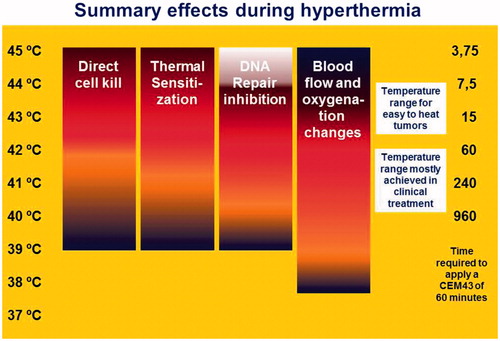Figures & data
Table 1. Relation of CEM43 with response.
![Figure 1. Illustration of the association between number of (A) interstitial measurement points and thermal dose CEM43°CT90tumour (Spearman’s rank correlation −0.64, p < 1e–10) and (B) tumour maximum diameter and thermal dose as total CEM43°CT90tumour (Spearman’s rank correlation −0.70, p < 1e–6) in 72 patients with loco-regional breast cancer treated with superficial hyperthermia applied using 434 MHz microwaves. Picture from De Bruijne et al. [Citation22], with permission.](/cms/asset/019d7560-1e6f-4595-b0b1-04834bea3035/ihyt_a_1114153_f0001_b.jpg)

